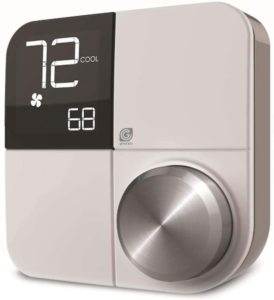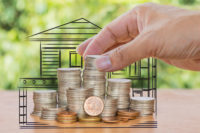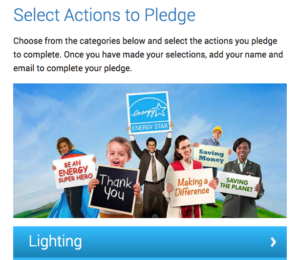By now you know that saving energy makes sense any time we can pull it off, given the world’s short supplies of oil and the pollution and climate change we create when we burn any fossil fuel.
Nevertheless, you may still be among the millions of people who have not yet incorporated energy conservation into your daily routine. Why not? The number one reason for most people is money – not necessarily real money, but definitely the perception that it will require a lot of money to put energy-saving strategies to work in your home.
I say “perception,” because that’s often what it is. Many consumers are under the generally false impression that they can’t afford to adopt ‘green’ (i.e., energy efficient) technologies. And especially during these economic hard times, even the suspicion that something will cost more is enough to deter its purchase.
That’s why the concept of Green ROI – return on investment – is so important. Green ROI offers a way to calculate what the purchase of a green product is worth both in the short term and a longer way down the road. In other words, if you spend xx $$$ on a green product today, how long will it take you to realize a gain – in real dollars – and make the purchase worthwhile?
Well, consider a few of these Green ROI calculations, courtesy of GreenandSave.com, and based on a ten-year performance period:

Cost: $115
Annual Savings: $180
ROI: 156.5%

Cost: $20 for two strips
Annual Savings: $24
ROI: 120%

Cost: $3.00 – $6.00 per bulb
Annual Savings: Each bulb saves on average $4 to $7 per year in electricity
ROI: 133.3%
See how saving energy saves money – a lot of money — over the long-term? But what about climate change, you ask?
Take programmable thermostats. The U.S. Environmental Protection Agency, which administers the federal Energy Star program, calculates that in 2006, consumers using programmable thermostats not only saved a total of $14 billion on their utility bills; they also saved enough energy to reduce greenhouse gas emissions equivalent to taking 25 million cars off the road.
Want to know how additional investments will create Green ROI? Click here.


















12 thoughts on “Saving Energy Saves More Than Fuel, starting with CO2 and $$$”
You are so right about the perception issue. I hope that your handy ROI demonstration helps to change the minds of a whole bunch of people!
We saw a huge difference in our energy bill once we switched out all our bulbs to CFLs. We also saw a huge difference when I stopped leaving my desktop computer on all day. Unfortunately, when I bought it, energy use was not one of my considerations.
I highly recommend the SmartStrip power strips that you have pictured. They make turning off multiple pieces of equipment automatic and take the thought out of it.
Diane,
These are great suggestions – I love the “Green RoI” concept. I think we will continue to see more inducements for consumers to go green through programs such as CFL bulb giveaways (I know Pepco has done this) and other programs. Perhaps we green bloggers can help to get the word out when these promotions are available. Anything that helps to save energy is worth shouting about from the rooftops, in my opinion!
Thanks for participating in the Green Moms Carnival!
Lynn
i like seeing the tangible results….nicely done
Thanks for the introduction to GreenandSave.com!
Love this post because, especially now when money is tight, people think they cannot “go green”. ROI proves that we all can.
Great suggestions! Even if you don’t want to lay out the cash for new stuff, there are still so many things you can do to reduce your energy bill. My big first suggestion is to turn off the heat dry on your dishwasher and just let the plates airdry. Saves you cashola on your electricity bill, and doesn’t cost you a dime to implement!
Diane,
Great tips! I really like the breakdown of cost, yearly savings and the all important return on investment.
Thanks for this,
Katy
http://www.non-toxickids.net
These are great suggestions – I love the “Green RoI” concept. I think we will continue to see more inducements for consumers to go green through programs such as CFL bulb giveaways
Thank you for your introduction GreenandSave.com!
Even if you don’t want to lay out the cash for new stuff, there are still so many things you can do to reduce your energy bill. My big first suggestion is to turn off the heat dry on your dishwasher and just let the plates airdry. Saves you cashola on your electricity bill, and doesn’t cost you a dime to implement!
Great advice! Even if you don’t want to lay the cash for the new items, there are still a lot of things you can do to reduce your energy bill. My first suggestion is to turn off the heating drying in your dishwasher, just let airdry plates. Save you in your charge cashola, won’t cost you a dime to achieve!
Comments are closed.